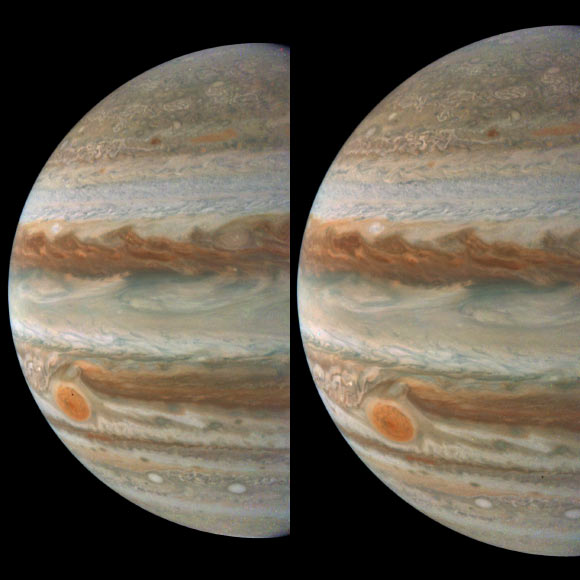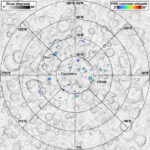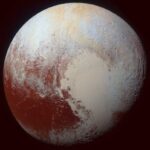NASA’s Juno orbiter captured these views of the tiny, red moon Amalthea and its parent planet and during a close flyby on March 7, 2024.
These views of Jupiter, captured by Juno during its 59th close flyby of the giant planet on March 7, 2024, provide a good look at Jupiter’s colorful belts and swirling storms, including the Great Red Spot. Image credit: NASA / JPL-Caltech / SwRI / MSSS / Gerald Eichstädt.
Also known as Jupiter V, Amalthea is the third moon of Jupiter in order of distance from the gas giant.
Discovered in 1892 by the American astronomer Edward Emerson Barnard, the moon is irregular, with dimensions about 250 x 146 x 128 km (155 x 91 x 80 miles).
Amalthea orbits 181,400 km (112,717 miles) from Jupiter and takes 0.498 Earth days to complete one orbit.
It rotates on its axis once for each orbit around Jupiter, always keeping the same side facing the planet.
Amalthea is the reddest object in our Solar System and it appears to give out more heat than it receives from the Sun.
This may be because, as it orbits within Jupiter’s powerful magnetic field, electric currents are included in the moon’s core.
Alternatively, the heat could be from tidal stresses.

These images from Juno show Jupiter’s tiny moon Amalthea. Image credit: NASA / JPL-Caltech / SwRI / MSSS / Gerald Eichstädt.
“Amalthea has a potato-like shape, lacking the mass to pull itself into a sphere,” the Juno scientists said.
“In 2000, NASA’s Galileo spacecraft revealed some surface features, including impact craters, hills, and valleys.”
“Amalthea circles Jupiter inside Io’s orbit, which is the innermost of the planet’s four largest moons, taking 0.498 Earth days to complete one orbit.”
“At the time that the first of these two images was taken, Juno was about 265,000 km (165,000 miles) above Jupiter’s cloud tops, at a latitude of about 5 degrees north of the equator,” they added.
“Citizen scientist Gerald Eichstädt made these images using raw data from Juno’s JunoCam instrument, applying processing techniques to enhance the clarity of the images.”




